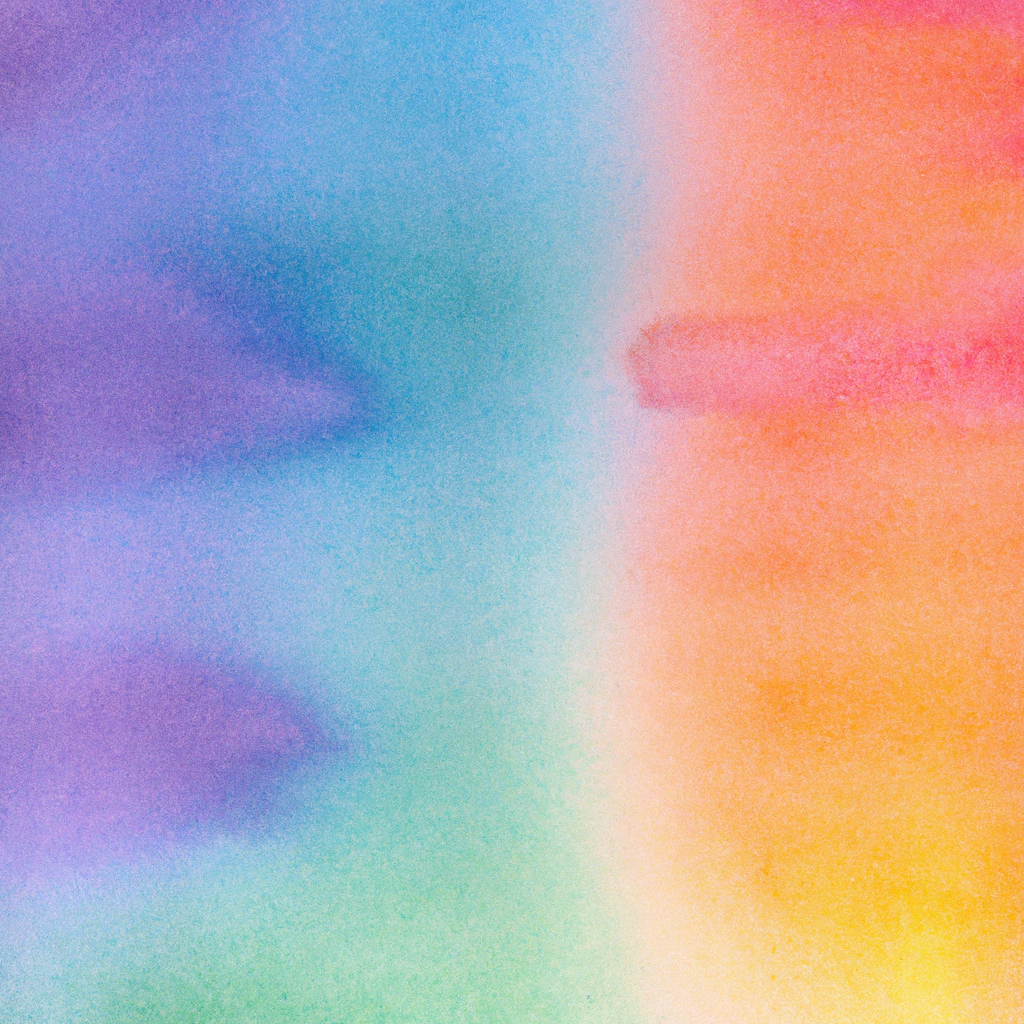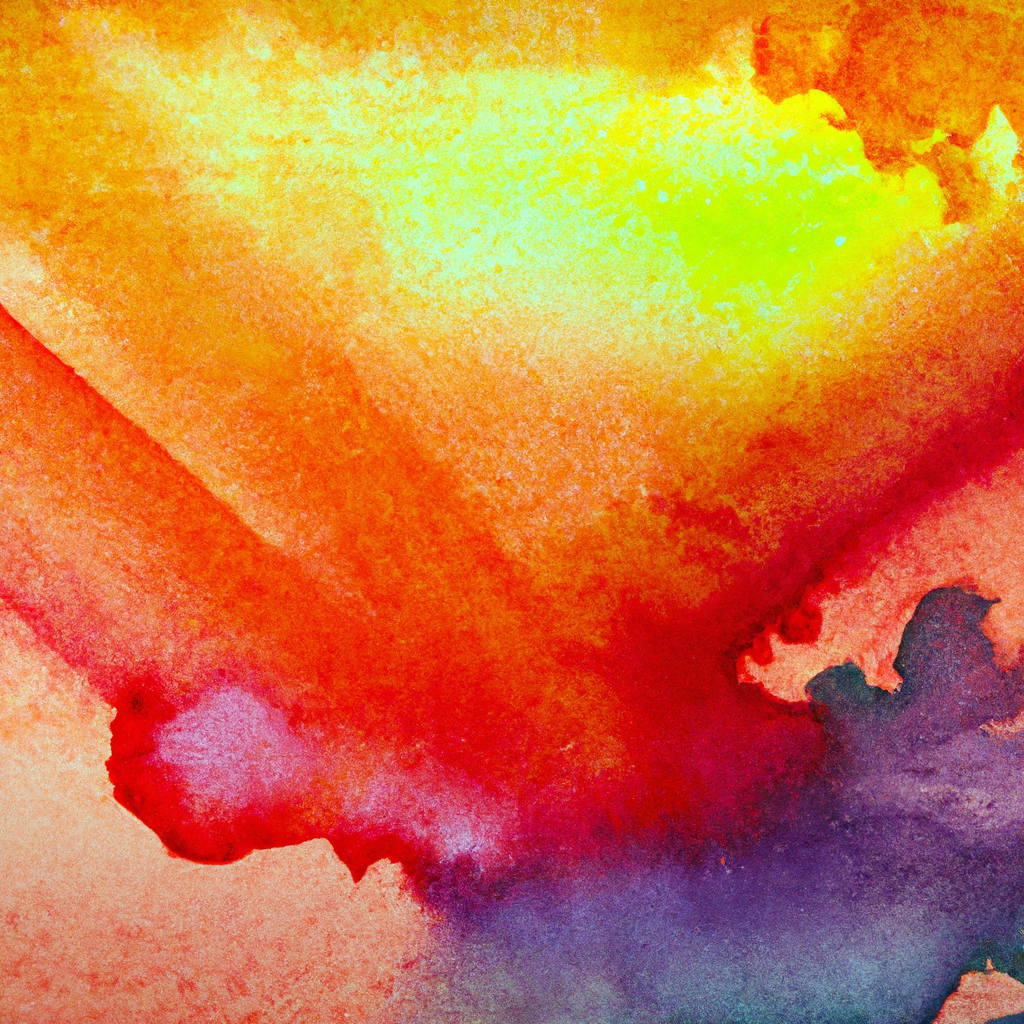Basic Techniques for Watercolor Painting Beginners
As an art teacher, I often meet people curious about watercolor painting but still need to figure out where to start. I get it – watercolor can be a tricky medium to master, but it’s also incredibly rewarding once you get the hang of it. That’s why I’ve put together this guide to help beginners get started with watercolor painting. Whether you’re a complete novice or have some painting experience, I hope you’ll find some helpful tips and techniques to take your watercolor skills to the next level. So grab your paints, and let’s dive in!
Table of Contents
- Wet-on-dry technique
- Painting flat surfaces
- Wet-on-wet technique
- Layering and blending colors
- Painting gradients
- Conclusion
Wet-on-dry technique
The wet-on-dry technique is one of the fundamental skills in watercolor painting, and it’s an essential technique that every beginner should master. This technique involves applying wet paint onto dry paper, which allows you to create sharp edges and detailed lines. It’s like drawing with a pencil, except using paint and a brush instead!
I love the wet-on-dry technique because it’s so versatile and precise. With this technique, you can create anything from delicate florals to bold landscapes and everything in between. The key to making it work is to have the right amount of water and paint on your brush. The paint won’t spread evenly on the paper if your brush is too dry. If your brush is too wet, the paint will bleed and create fuzzy edges. Finding the perfect balance between wetness and dryness is essential to getting the crisp, clean lines you want.
To get started with the wet-on-dry technique, you’ll need to wet your brush, load it with paint, and then apply it to your dry paper. If you’re a beginner, start with a small amount of paint and build up gradually. It’s better to layer the paint than to apply too much all at once and risk making a mess.
One of the great things about the wet-on-dry technique is that it allows you to create different effects depending on how you apply the paint. For example, if you use a dry brush and apply the paint with quick, short strokes, you can create a textured, rough surface. Using a wet brush and applying the paint with long, flowing strokes, you can create a smooth, blended effect.

Painting flat surfaces
As a watercolor beginner, painting a flat surface can be one of the most frustrating aspects of the medium. Achieving a smooth, even wash without creating streaks or uneven areas can be difficult. But fear not! With patience and practice, you can master this skill and take your watercolor painting to the next level.
Mix your paint to the right consistency. You want the paint to be thin enough to flow smoothly and easily but not so thin that it becomes too watery or starts to pool on the paper. Make sure you have enough paint mixed. To begin painting flat surfaces, it’s easier to use a ready-made color.
Now, it’s time to apply the paint. Use long, even strokes to cover the surface, keeping the paint consistent across the entire area. If you need to go back over an area, do so quickly before the paint dries to avoid creating visible brushstrokes.
If your paint is starting to dry before finishing an area, you may need to work in smaller sections or use a spray bottle to keep the area moist. This will help the paint blend, spread more easily, and prevent harsh lines or edges.
Keep going even if your first attempts don’t turn out perfectly. Keep practicing and experimenting with different techniques until you find the one that works best for you. With time and practice, you’ll be able to create smooth, even washes that will make your watercolor paintings truly shine.
Wet-on-wet technique
This technique involves applying wet paint onto wet paper, which allows you to create soft, blended washes and beautiful gradients. I love this technique because it creates a dreamy, ethereal effect that is perfect for painting skies, oceans, and other natural landscapes.
You’ll need to wet your paper with a clean brush before applying the paint to use the wet-on-wet technique. Depending on the effect you want to achieve, you can wet the entire surface or just a specific area. Once your paper is wet, you can apply the paint with a wet brush, letting the colors blend and flow together. The beauty of this technique is that it allows you to create a range of effects, from delicate, transparent washes to bold, colorful blooms.
When using the wet-on-wet technique, it’s important to remember that you have less control over the paint than you do with the wet-on-dry method. The paint will flow and mix on the paper, which can be exciting and frustrating. If you’re new to this technique, I recommend experimenting with different colors and brush strokes to see how they interact on the wet surface. You might be surprised at the beautiful effects you can create by letting the paint do its thing!
You can use this technique to create stunning landscapes and other natural scenes with practice and experimentation.

Layering and blending colors
Layering and blending colors is one of the most fun and creative parts of watercolor painting. This technique involves building up multiple layers of color to create depth and texture in your paintings. It’s a great way to add interest and complexity to your work, and it’s also a great way to experiment with color combinations.
To start layering and blending colors, you’ll need to begin with a base layer of paint. Once that layer is dry, you can add additional layers of paint by layering the same color over itself or adding a new color. This is where the fun begins – by layering different colors on top of one another. You can create unique and exciting color combinations that you might not have thought otherwise.
The key to successful layering and blending is to be patient and take your time. Let each layer dry completely before adding the next one, so the colors don’t bleed into each other and become muddy. It’s also important to use the right amount of water – too much water can cause the colors to become too diluted, while too little water can cause the paint to become too thick and difficult to blend.
There are a few different techniques you can use when blending colors.
- One is to use a dry brush to gently blend the colors, creating a soft and subtle effect.
- Another is to use a wet brush to blend the colors, creating a more vibrant and intense effect.
- You can also experiment using a sponge or a paper towel to create different textures and effects.
With patience and experimentation, you can create unique and interesting color combinations that bring your paintings to life.

Painting gradients
As a watercolor beginner, learning to paint gradients can be a fun and rewarding challenge.
To get started it’s important to choose the right colors and brushes to get started. Choose two or three colors that blend well together and a large, soft brush for a simple gradient. You’ll also need a palette and some clean water.
Start by mixing the lightest color in your palette and apply it to the top of the paper where you want the gradient to begin. Clean your brush (or take another one. It’s quicker!) and pick up the next color, mixing it with a small amount of the previous color so the transition is smooth. Apply the second color just below the first, and continue until you’ve applied all of your colors.
Once the paint is on the paper, it’s time to blend the colors. The key to a smooth gradient is to work quickly and efficiently, using a clean, wet brush to blend the colors before they can dry. Start at the top of the gradient and work your way down, using light, sweeping strokes to blend the colors. If you need to, add more water to your brush to help the colors blend more easily.
Remember, there’s no right or wrong way to create a gradient – it’s all about experimenting with different colors and techniques to find the one that works best for you. With practice and patience, you’ll be able to create beautiful, smooth gradients that add depth and dimension to your watercolor paintings.
Conclusion
Watercolor painting is a beautiful and versatile medium that can create many stunning artworks. Of course, as with any art form, practice and patience are key. Don’t be discouraged if your first attempts at watercolor painting don’t turn out exactly as you imagined – the beauty of this medium lies in its unpredictability and the unexpected effects that can occur.
Remember to have fun, experiment with different colors and techniques, and seek learning opportunities and resources to help you improve and grow as an artist.
